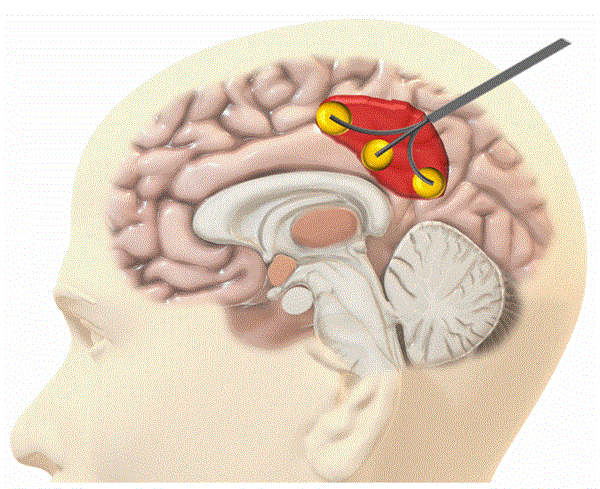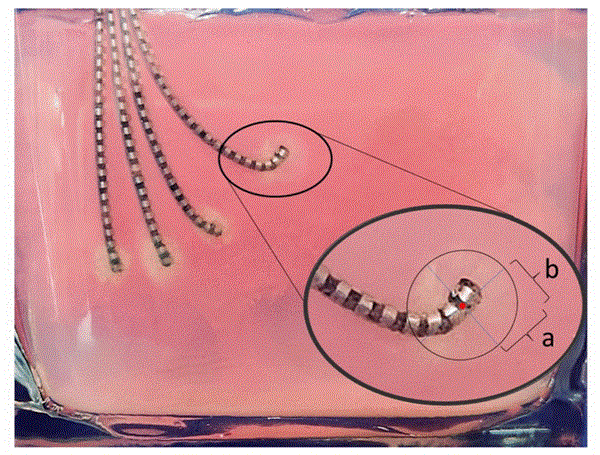Steerable Laser Interstitial Thermotherapy Robot
Full Description
Background
Minimally invasive, neurosurgical procedures require exceptional precision and adaptability to navigate the brain while avoiding critical structures. Existing approaches face challenges such as controlling flexible instruments within soft tissue environments and achieving accurate steering along complex trajectories.
Technology
UCR faculty Jun Sheng and his team, have developed a steerable, laser ablation therapy robot for minimally invasive neurosurgery which incorporates a telescopic, tendon-driven, flexible tube system along with nonmagnetic actuators. The robot also includes an optical fiber that is coupled to a laser generator for targeted thermal ablation.

Conceptual illustration of multi-site ablation within a large, brain tumor using a robotic, steerable, laser ablation probe.

Multi-site laser ablation in agar, generating oval heating zones around the probe tip at different configurations of the probe.
Features/Benefits
- Precision steerability - features a tendon-driven, telescoping tubing system that allows controlled bending and navigation along curved trajectories.
- Multi-plane ablation capability - enables coordinated, rotational and linear movements to access multiple ablation sites offering enhanced treatment flexibility.
- Real-time temperature monitoring - the ability to integrate fiber Bragg grating sensors, photothermal nanoparticles and a flexible saline cooling system provides for precise and real-time thermal feedback.
- MRI compatibility - the use of nonmagnetic actuators ensure safe operation within MRI environments.
Suggested uses
- MRI guided deep, brain tumor ablation
- Targeted, spinal metastasis laser ablation
- Endoscopic ENT tumor resection
Inventor Information
- Please visit Jun's group website to learn more about their research at UCR.
- Please review all inventions by Jun and his team at UCR.
- Please read recent news coverage of Jun at UCR
Related Materials
Patent Status
| Country | Type | Number | Dated | Case |
| United States Of America | Published Application | 20250107861 | 04/03/2025 | 2024-715 |
Additional Patent Pending
Contact
- Venkata S. Krishnamurty
- venkata.krishnamurty@ucr.edu
- tel: View Phone Number.
Other Information
Keywords
steerable robot, laser interstitial thermal therapy, LITT, brain tumor, laser ablation, MRI guided steerable robot, glioblastoma
